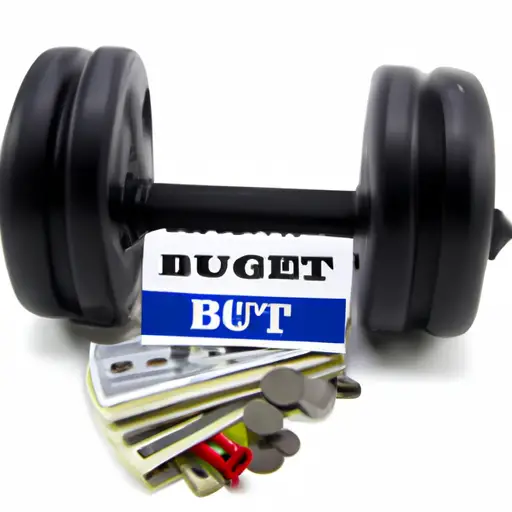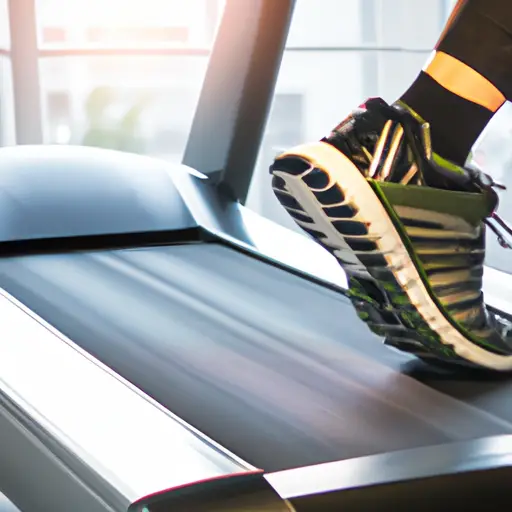Unlock Explosive Power with Plyometrics
The Riveting World of Plyometrics
Hey there, folks! Today, let me introduce you to the exciting world of plyometrics. In simple terms, it refers to exercises that involve quick and explosive movements intended to boost power, agility, and athletic performance.
Now, you may ask, “Why should I care about plyometrics?” Well, my friend, this type of training has a plethora of benefits that I will discuss in more detail later. But let me give you a quick sneak peek before we dive deeper into the subject.
Plyometrics can help you:
- Build strength and power quickly
- Improve your athletic performance and skills
- Prevent injuries
Impressive, right? So without further ado, let’s jump right in! (pun intended).
What is Plyometrics?!
Alright, let’s get down to business and answer the burning question: what even is plyometrics? Simply put, plyometrics (often referred to as “plyos”) are a form of exercise that involves explosive movements designed to increase power and speed. These movements can involve jumping, hopping, and bounding, and are typically done in a series of repetitions.

Some common examples of plyometric exercises include box jumps, burpees, and jump squats. But what sets these exercises apart from traditional strength-training moves is that they involve maximizing the stretch-shortening cycle of your muscles – that is, the quick “bounce-back” that your muscles naturally experience after they’re stretched.
Why is this important? Well, by repeatedly training your muscles to generate and harness this explosive power, you can improve your overall athletic performance across a range of sports. But more on that later. For now, let’s dive a little deeper into how plyometrics actually work.
Uncovering the Magic of Plyometrics: How It Actually Works
So, I know we’ve talked about the incredible benefits of plyometrics, but how exactly does it work and why is it so effective? Okay, let’s get into it. Plyometrics rely on the stretch shortening cycle or SSC, which is the same principle as a rubber band. When you stretch a rubber band and then release it, the energy stored in the band propels it forward with greater force than if you just threw it. Similarly, when you perform a rapid stretch or eccentric movement, the muscle fibers are elongated and then immediately contracted, generating a greater amount of power than if you simply contracted the muscle.
During a plyometric movement, your muscles stretch rapidly before immediately contracting. This helps increase the force generated by the muscle fibers, which can lead to improved power and explosive strength. It also helps retrain your nervous system, which can help you recruit more muscle fibers during other exercises or activities. Ultimately, this enhanced force and power can translate to improved athletic performance in a variety of sports and activities. The key is to perform the movements correctly and safely.
A word of caution, though: plyometrics should not be used as a standalone workout. It is an intense training method that should be used in conjunction with other strength and conditioning exercises. Additionally, plyometrics can put a lot of stress on your joints and connective tissues, so proper form and progression is crucial to avoid injury.
In conclusion, plyometrics are an incredible tool to improve power, explosiveness and athletic performance. The stretch shortening cycle is the key to plyometric training, yielding significant benefits when performed correctly. The magic is in the movement, so make sure you focus on proper form, progressions, and work within your own limits.
Benefits of Plyometrics
Get ready to hop, jump, and skip your way to a better body with plyometric exercises! As a fitness enthusiast who has been incorporating plyometrics into my workout regimen for years, I can attest to the many benefits this high-intensity training provides.
First and foremost, plyometrics increase your strength and power. These explosive exercises force your muscles to work harder and faster, resulting in stronger and more explosive movements. Whether you’re a track athlete looking to boost your speed or a weightlifter trying to increase your maximum power output, plyometrics can help you achieve your goals.
In addition to improved strength and power, plyometrics can also improve your overall athletic performance. By training your muscles to be more explosive, you’ll be able to move faster, jump higher, and react more quickly. This increased athleticism can translate to improved performance in a variety of sports and activities.
Another benefit of plyometrics is injury prevention. By improving your body’s overall strength and stability, you’ll be less likely to experience injuries during physical activity. Plus, plyometrics can help you develop better balance and coordination, which can reduce the risk of falls and other accidents.
When performing plyometrics, it’s important to keep a few key tips in mind. Be sure to warm up thoroughly before starting your workout, as these exercises are high-intensity and can put a lot of strain on your muscles and joints. Additionally, start with beginner-level exercises and work your way up to more advanced movements as your strength and conditioning improves.
By incorporating plyometrics into your fitness routine, you can reap all the benefits this high-intensity training has to offer. So why not give it a try? Your body (and your performance) will thank you!
For more information and exercises, check out this great resource here.
Tips for Performing Plyometrics
Alright, so now that you know what plyometrics is and how it works, you’re probably wondering how to put it into practice. As a certified personal trainer, I’ve seen a lot of people make common mistakes when it comes to plyometrics. Here are some tips that will help you get the most out of your plyometric training:
Start Slowly and Progress Gradually
Plyometrics are high-intensity exercises, so it’s important to start slowly and progress gradually. Don’t just jump into doing advanced plyometric exercises right away. Start with basic exercises, such as jumping jacks or skipping, and gradually increase the difficulty.
Wear the Right Shoes
Wearing the right shoes is critical when it comes to plyometrics. Look for shoes that have good support and cushioning. Shoes with a flat sole are ideal for plyometrics, as they provide a stable base for jumping and landing.
Focus on Proper Form
The key to getting the most out of plyometrics is to focus on proper form. Make sure that you are landing softly and absorbing the impact with your muscles, rather than your joints. Keep your core tight and your arms engaged. And always make sure that your knees are aligned with your toes.
Use Variation
Don’t stick to the same plyometric exercises all the time. Use variation to challenge your body in different ways. Try different exercises, such as box jumps, hurdle hops, or single-leg jumps. This will keep your workouts interesting and help to prevent plateaus.
Rest and Recover
Finally, it’s important to rest and recover properly after plyometric training. Plyometrics place a lot of stress on your muscles and joints, so it’s important to give your body time to recover. Make sure to include rest days in your training schedule, and focus on proper nutrition and hydration.
By following these tips, you’ll be well on your way to mastering plyometrics and taking your fitness to the next level.
Here’s What You Should Take Away from Plyometrics
Overall, plyometrics is an excellent tool for building strength, increasing power, and improving athletic performance. With proper technique and consistency, individuals can experience significant benefits from this training method.
However, it’s important to remember that plyometrics is not suitable for everyone. Those with prior injuries or certain medical conditions should consult with a healthcare professional before beginning any new exercise regimen.
When it comes to performing plyometrics, it’s essential to start with the basics and gradually progress as your body adapts. It’s also crucial to pay attention to proper form and avoid overtraining or pushing your body beyond its limits.
One of the key takeaways from plyometrics is that it’s a versatile exercise method that can benefit a range of individuals, from athletes to those looking to improve their fitness levels. It’s also an excellent tool for injury prevention and can help individuals develop a stronger mind-muscle connection when performed correctly.
Overall, plyometrics should be a part of any well-rounded exercise routine and can be an effective way to achieve your fitness goals. Remember to consult with a professional before beginning any new exercise routine and to prioritize proper technique and gradual progression.






